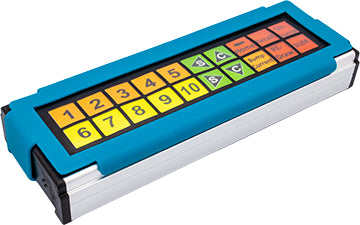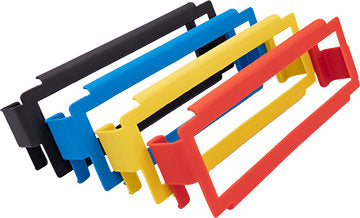If you've ever had to change or insert a Bumpbar Overlay into your Bumpbar, you may have needed to remove the plastic frame covering the outer edges of the front of the Bumpbar. Some customers are unaware that this Face Protector is a separate piece or why it's necessary. This blog post aims to clarify why we include and install a Face Protector with every Bumpbar shipment.
The Bumpbar Face Protector, also known as a frame, is a simple plastic cover that wraps around the front-facing portion of the Bumpbar. It not only enhances the appearance by framing the buttons nicely but also serves a functional purpose. The Face Protector contributes to the longevity of your Bumpbar, particularly the switches and the clear layer that covers them.

Initially, Bumpbars consist of a housing/enclosure made of nylon or aluminum, which holds all the internal electronics and provides space for the installation of membrane switches on top. The buttons of the Bumpbar are essentially a large sticker carefully applied by our assemblers to ensure precise alignment and complete coverage. Once the membrane switch is installed, we add a second clear plastic layer on top, allowing for the customization of button configurations using Bumpbar Overlays.
For both the membrane switch and the clear top cover, we have chosen the resilient and durable 3M adhesive. Our employees can testify to the strength of this adhesive when refurbishing Bumpbars and removing old membrane switches. Once cured, this adhesive can only be fully removed from the Bumpbar enclosure with the assistance of high-powered lasers. However, kitchen environments are particularly harsh on adhesives of all types. The air itself can act as a solvent, gradually dissolving the adhesive and reducing its effectiveness over time. To address this issue, we designed the simple solution of the Bumpbar Face Protector. By preventing grease-filled air from contacting the edges of these adhered elements, the Face Protector significantly extends the lifespan of your Bumpbar.

During our refurbishment process, we noticed that many Bumpbars showed signs of users attempting to peel back the clear top layer from the corners. This behavior is similar to the "That Peeling Feeling" phenomenon, where individuals enjoy peeling plastic protective layers to reveal a pristine surface beneath. As employees stand idle, waiting for the next order or anticipating a bump to an upcoming order, they unconsciously pick at the exposed corners, gradually exposing more of the membrane switch, clear top layer, and Bumpbar Overlay to the grease-laden air. This unintentional habit reduces the potential lifespan of the Bumpbar. However, with a Bumpbar Face Protector installed, this issue is eliminated as all exposed edges of these adhesive elements are fully covered.

Lastly, the Bumpbar Face Protector is available in four different color options: standard black (included with all Bumpbars and Bumpbar Repair Kits), red, yellow, and blue. This allows you to easily color-code your Bumpbars for different parts of your kitchen line or cater to diverse customers if you're a distributor. Our Aluminum and Nylon Bumpbars offer the option to choose a different color Face Protector (with a slight price increase as we modify prebuilt Bumpbars in stock). Alternatively, you can order Bumpbar Face Protectors in all four colors as singles for $3.50 each or in a 10-pack at $2.50 per unit.
We hope this blog post has shed light on the importance and benefits of the Bumpbar Face Protector. By safeguarding the switches, clear layer, and Bumpbar Overlay, it ensures the durability and extended lifespan of your Bumpbar. Additionally, the color options provide flexibility for organization and customization. If you have any further questions or would like to order Bumpbar Face Protectors, please don't hesitate to reach out.
Thank You,
KRS Corporation, LLC

